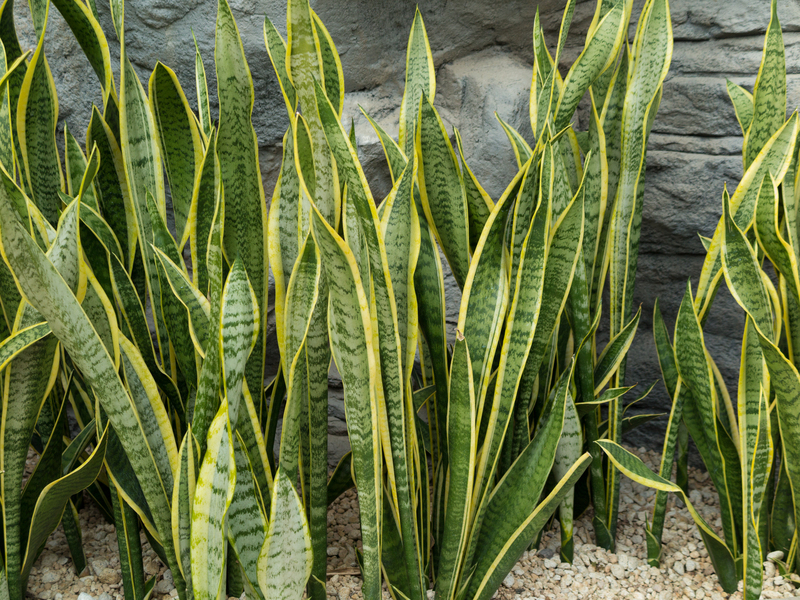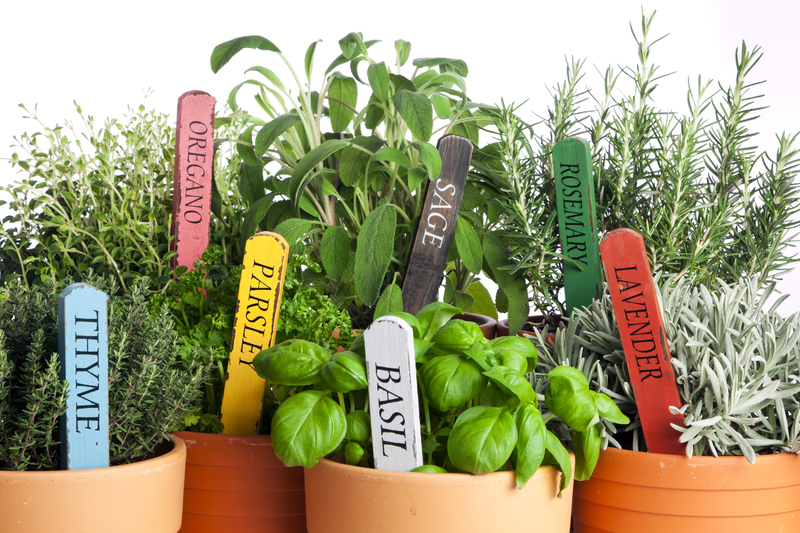Planning a Garden That Inspires Children's Imagination
Posted on 22/06/2025
Planning a Garden That Inspires Children’s Imagination
Every child deserves a space where their creativity can blossom just like the wildflowers beneath their feet. A garden designed specifically to spark curiosity and wonder is the perfect setting for childhood memories to take root and flourish. Planning a garden that inspires children's imagination does more than just beautify your yard—it turns outdoor time into a living adventure, a learning laboratory, and a storybook come to life.
Why Create an Imaginative Garden for Kids?
Children are naturally drawn to nature. The sights, sounds, and textures of a garden offer endless opportunities for discovery, learning, and creative play. Crafting a garden that ignites imagination provides these key benefits:
- Encourages hands-on learning about plants, wildlife, and the environment
- Promotes physical activity and time away from screens
- Fosters a love for nature and environmental stewardship
- Builds problem-solving and observation skills
- Creates a safe place for pretend play, exploration, and storytelling
With thoughtful planning, your garden can become a magical extension of your child's imagination.
1. Key Elements of a Child-Inspired Garden
When planning a garden that inspires children's imagination, focus on creating spaces that invite play, surprise, and exploration. Consider including these core features:
1.1 Paths and Hideaways
Let's face it: kids love secret places and winding paths. Curving trails made from stone, wood, or mulch not only help organize your garden but encourage children to wander and wonder. Tuck away little hideouts—a den of tall grasses, a willow teepee, or a simple tent—that prompt imaginative games.
- Curvy stepping stone trails
- Arbors or tunnels of climbing plants
- Small nooks hidden by bushes or flowers
- Miniature "forts" made from sticks, branches, or woven willow
- Maze-like layouts for a sense of adventure
1.2 Interactive Garden Features
Children learn best through doing. Incorporate elements that invite touch, sound, and movement:
- Water play: add shallow birdbaths, a child-safe splash fountain, or a DIY stream
- Sand and earth: designate a digging patch or sandpit for unstructured play
- Sensory panels: old musical instruments or wind chimes encourage exploration
- Edible gardens: let kids pick berries, peas, tomatoes, or herbs straight from the vine
- Fairy or gnome gardens: mini furniture, doors, or figurines inspire magical stories
1.3 Plant Selection for Wonder and Whimsy
Plants are the main characters in your childlike garden story. Choose a mix of playful plants that delight eyes, noses, and fingers:
- Sunflowers and hollyhocks: for towering, "magical" walls
- Lamb's ear: for its soft, velvet leaves
- Nasturtiums: edible, bright, and easy to grow
- Snapdragons and touch-me-nots: fun flowers that respond to touch
- Fragrant herbs: mint, lavender, basil, or lemon balm for sniffing and snacking
- Unusual shapes: globe thistle, curly parsley, twisted hazel branches

2. Step-by-Step Guide to Planning a Magical Children's Garden
2.1 Involve Children in the Planning
Your best design partners are the little ones themselves! Ask for their wishes:
- What kinds of flowers or colors do they love?
- Do they dream of a hideout, a butterfly patch, or a veggie plot?
Let kids help design the layout by drawing pictures or arranging small objects on a model. This not only gets them excited, but gives them a sense of ownership and responsibility.
2.2 Choose the Perfect Spot
When planning a children's imagination garden, look for a space that:
- Is visible from main living areas, so you can supervise easily
- Receives a mix of shade and sunlight, accommodating different plants
- Is easy to access and preferably close to the house
- Has good soil, or can be improved with raised beds
If your garden is small, get creative with vertical planters, containers, or mini gardens on patios and balconies.
2.3 Design for Safety and Comfort
Safety is essential in any kid-oriented landscape. Here are key tips:
- Avoid toxic plants like foxglove, oleander or monkshood
- Use soft surfaces (grass, mulch, shredded bark) to cushion falls
- Install sturdy, child-friendly fencing or hedges to mark boundaries
- Keep tools and hazardous products locked away
- Create shaded areas with trees, pergolas, or umbrellas for hot days
Comfortable, accessible paths ensure everyone, including toddlers and kids with mobility challenges, can enjoy the space.
2.4 Create Zones for Play and Discovery
Divide your garden into special zones, each with its own magical experience:
- Adventure zone: tunnels of sunflowers, winding paths, stepping stones
- Sensory corner: plants for touching, smelling, listening (e.g. ornamental grasses that rustle in the breeze)
- Kitchen patch: raised beds for veggies and herbs kids can plant and harvest
- Art and craft nook: a small table for rock painting or nature crafts
- Storybook clearing: a shady spot for reading or puppet shows
These zones transform a simple backyard into a world of endless play.
3. Top Plant Choices for an Imaginative Children's Garden
3.1 Edible Wonders
Pick prolific, easy-to-grow edibles for snacking and learning:
- Sugar snap peas — quick to germinate, fun to pick
- Strawberries -- sweet rewards throughout early summer
- Cherry tomatoes — small and perfect for little hands
- Mint and chives — tough, tasty, and fragrant
- Blueberries -- also attract birds and butterflies
Nothing beats the thrill of tasting the fruits of their gardening labor!
3.2 Playful and Tactile Plants
- Pampas grass or fountain grass — for swishing and hiding
- Lamb's ear -- velvety leaves make for soothing touch
- Sensitive plant (Mimosa pudica) -- leaves fold when touched
- Snapdragons -- fascinating "dragon" mouths
- Sunflowers -- tall, bold, and great for birdlife
3.3 Magical Flowers
Choose varieties that inspire wonder and storytelling:
- Foxgloves (ensure safety--may be best for supervised areas)
- Bluebells — carpets of color in spring
- Columbine -- whimsical, fairy-like blooms
- Morning glories -- bright, uplifting from dawn
4. Creative Ideas to Enhance Your Kids' Garden
4.1 Add Artistic and Playful Touches
- Painted rocks as story characters or markers
- Handcrafted windmills, pinwheels or mobiles
- DIY stepping stones using handprints or mosaics
- Upcycled quirky planters (old boots, wheelbarrows!)
- A "bug hotel" or butterfly house
Color, whimsy, and personalization make your child's garden uniquely theirs.
4.2 Encourage Wildlife and Eco-Friendly Play
Invite helpful creatures and teach children respect for nature:
- Add bird feeders, birdbaths, or nesting boxes
- Plant pollinator-friendly flowers and shrubs
- Incorporate log piles or leaf litter for bugs and beetles
- Compost together and let kids help with chores
Discovering animal visitors is pure magic for young explorers!
5. Maintaining a Garden that Continues to Inspire
A children's imagination garden naturally changes with the seasons and your child's growth. Keep it fresh and engaging with these tips:
- Change plantings or add annuals for new colors each year
- Rotate garden themes--one year it's a pirate cove, next year a fairy glade!
- Involve kids in planting, watering, harvesting, and seasonal chores
- Organize garden-based activities: treasure hunts, nature crafts, cooking from the garden
By offering variety and ongoing projects, your garden remains a source of joy and learning year-round.

6. Example Plan: A Miniature Enchanted Garden
If you're looking for inspiration, here's a simple design for a small imagination garden (about 10x10 feet):
- Entrance: an arched trellis with climbing sweet peas
- Circular path: stepping stones winding past a sunflower tunnel
- Secret nook: a willow dome for reading or hiding
- Edible patch: raised bed with strawberries, snap peas, and rainbow chard
- Magical zone: miniature fairy village with moss, pebbles, and painted stones
- Sensory bed: lamb's ear, mint, lavender, and nasturtiums
- Wildlife corner: bug hotel, birdbath, and wildflowers for pollinators
This plan includes all the elements of an imagination-sparking garden in a small, manageable space.
Conclusion: Planting the Seeds of Curiosity and Joy
Planning a garden that inspires children's imagination is truly an investment in their curiosity, creativity, and joy. Whether you have a large yard or a cozy patio, you can create a magical realm filled with living stories and learning adventures. Remember to embrace playfulness, encourage exploration, and let your child's ideas shape the garden as much as your own. With thoughtful design and a dash of whimsy, your outdoor space can grow into a cherished landscape of dreams—season after season, childhood after childhood.
Ready to transform your outdoor space? Start planning a garden that inspires kids today, and watch their imagination flourish in a world you create together!

